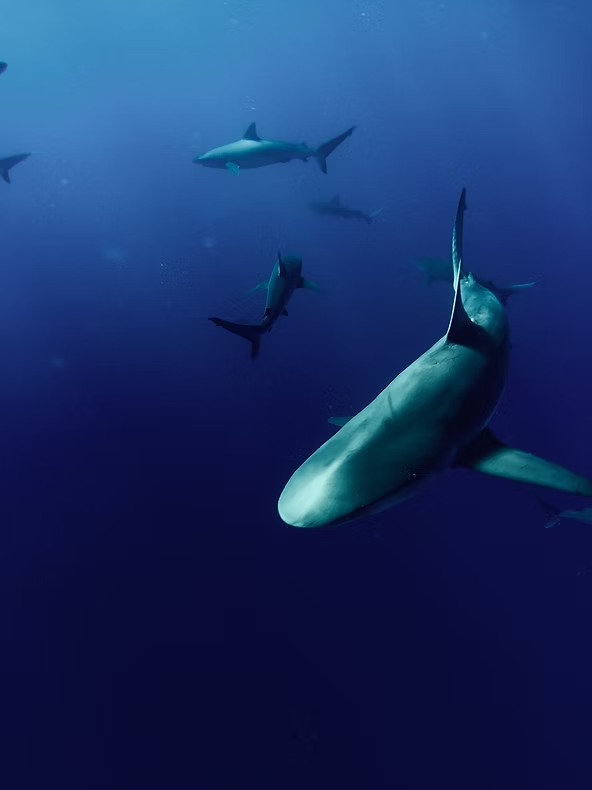Blue Sharks and Recreational Fisheries: Understanding Capture Stress
The fisher strains against the edge of the boat, rod in hand, reeling in a powerful, unseen animal. Minutes pass as sweat beads on their brow, and finally—a blue shark (Prionace glauca) breaks the surface. One of the most heavily exploited shark species worldwide, blue sharks face pressure from both commercial and recreational fisheries.
Sharks and Capture Stress
Like other fish, sharks respond to capture and handling stress differently depending on species. Common indicators include blood-based biomarkers such as pH, glucose, lactate, and plasma electrolytes. While commercial fishery interactions with blue sharks are well-studied, recreational fishery impacts remain less understood.
Filling the Knowledge Gap
Beneath the Waves Research Associate and Virginia Tech PhD student Brendan Shea aimed to address this gap. “Collaborating with New England commercial and recreational fishers targeting tuna, we often observed blue sharks as bycatch. While typically released, we wanted to understand how capture affects their stress physiology and overall fitness,” he explained. The team captured 20 blue sharks using rod-and-reel methods mimicking recreational interactions.
Measuring Stress in Real Time
Each shark’s hook time was recorded—from less than one minute up to 30 minutes. Blood samples were collected immediately after securing the shark on the boat. Analysis of glucose, lactate, and other biomarkers showed that short hook times typical of the fishery did not elevate stress levels. “Blue sharks appear resilient to capture over these durations,” said Shea.
Observations on Size and Glucose
Interestingly, smaller sharks showed higher blood glucose levels. This could reflect greater energy expenditure while fighting on the line or dietary differences among juveniles. However, variations in baseline glucose due to age and prey type could not be ruled out.
Implications for Anglers and Conservation
Shea emphasizes minimizing hook times during catch-and-release to ensure sharks swim off healthy. “Our research supports sustainable recreational shark fishing under the right conditions,” he noted. Proper hook removal and gentle handling are critical to reduce stress, even when anglers spend extra time safely releasing the shark.
Engaging the Fishing Community
Recreational shark fishing can foster positive attitudes toward conservation. Educating anglers about responsible practices encourages adoption of techniques that minimize harm. As shark catch-and-release grows, these studies provide vital information for effective fisheries management and community engagement in conservation efforts.

